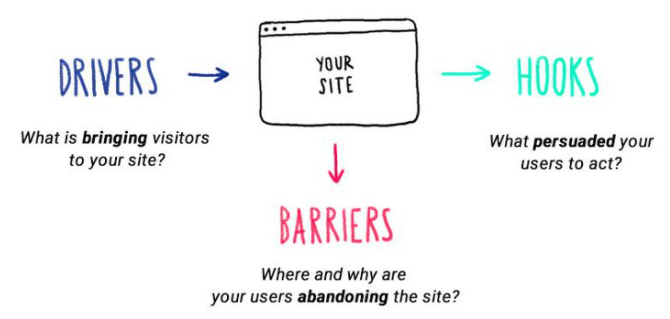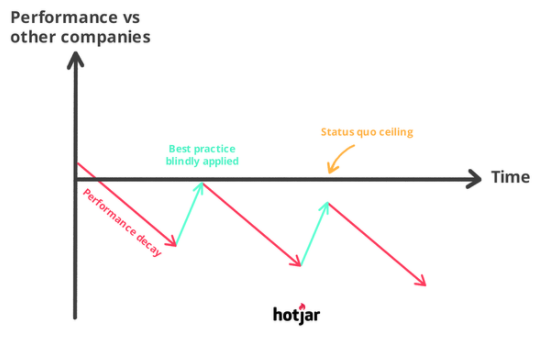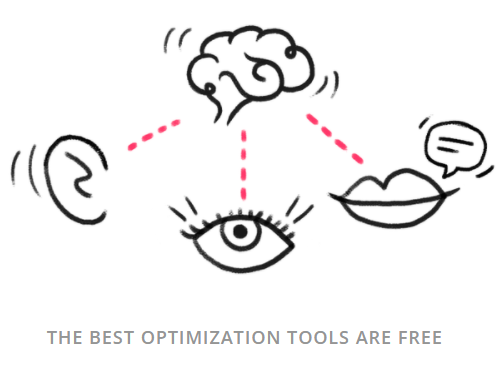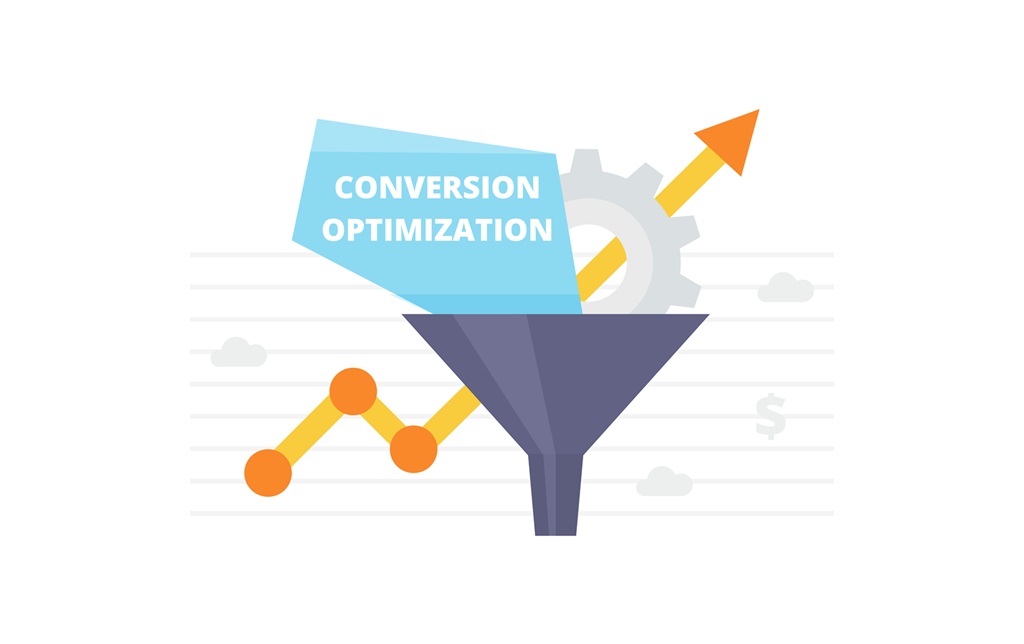Understanding what your visitors, users & customers need is the best way to increase website conversion rate.
After reading this guide, you’ll be well equipped with the knowledge required to gather the data you need to improve your conversion rates over & over again.
What is Conversion Rate Optimization (CRO)?
Getting a higher percentage of people to click on the desired action button on the website is Conversion Rate Optimization (CRO). These actions could be of purchasing a product, clicking ‘add to cart’, signing up for a service, filling out a form, or clicking on a link.
A more user-centric definition of CRO
The definition written above puts your attention on conversion percentages, averages & benchmarks. This definition directs you to a numerical approach where you look more on the numbers & less on the individuals behind them.
Here’s a more user-centric way of defining CRO:
It is the process of understanding what drives, stops & persuades your users, so you can give them the best user experience possible. This is what makes them convert & ultimately improves your conversion rate.
Wondering how this second definition is better?
- It is because it focuses on the end result i.e. conversion & that is very important.
- Before the actual conversion takes place, there’s a lot going on:
- Specific DRIVERS bring people to your website Specific BARRIERS make them leave
- Specific HOOKS persuade them to convert

There are times when your conversions don’t occur as planned. The cause may be a bug that is blocking 80% of your users from doing something but sometimes your website is working fine but still people are not converting.
When this happens, you need to dive deeper to understand the root cause and focus on your users and this is what CRO is all about. Whether you own an e-commerce site or manage online marketing, CRO must always be on top of your mind if you really want your business to grow.
How to Calculate Conversion Rate?
You can calculate conversion rate by:
- Dividing the number of conversions by the total number of visitors
- And multiplying the result by 100
This will give you the conversion rate in percentage.

Let’s look at an example for a better understanding.
On your web page, you had 50 sales & 500 visitors last month.
Your conversion rate is: 50/500 * 100 = 10%
What is the Average Conversion Rate?
An average conversion rate is between 1% – 4% but this figure is completely meaningless.
Why?
Because
- Conversion rates differ wildly depending on the conversion goal (ad clicks, checkout completions, newsletter signups, etc.)
- Every website, page & audience is different
- Most people don’t share their conversion data publicly
Averages help a lot in benchmarking but what is their purpose with your website?
There is no definite figure you can compare yourself against with 100% confidence.
Setting an average for yourself is a good thing but pushing yourself just to stay in line with it is certainly not what CRO is all about. Your prime focus should always be your users & conversions will naturally occur.
Conversion optimization best practices – and why are they dangerous?
CRO, in digital marketing, is commonly believed to be an action that guarantees an increase in conversions, for example:
- Use a strong color for all CTA (call-to-action) buttons
- Place CTAs above the foldUse urgency (e.g., time-limited offers) to drive sales
- Always display testimonials
- Use fewer form fields on your forms
These practices to be good or bad is very debatable.
Why?
- What may have worked yesterday may not work out today.
- Just because it worked for someone else, doesn’t mean it is going to work for you as well.
Using the same old techniques & practices stop a company’s growth. That is why companies are busy improving & making changes that will be recognized as ‘best practices’ in the future.

Undoubtedly, the best practice is to create & build a customer-centric culture where you can spend time in understanding your users & customers because they are ones who keep your business running.
Focus on what their needs & desired outcomes are, learn about their concerns & hesitations and then derive solutions accordingly.
Read on to learn more about this in the 3-step CRO program chapter of this guide.
The Best Conversion Rate Optimization Tools
Did you know that the best optimization tools are for free?
How?

Have you ever thought of your senses as a CRO tool?
Well, they are & that too, for free!!
Your brain, ears, eyes, mouth are the primary tools you need to understand your customers, empathize with their experience, draw conclusions based on the data, and ultimately make the changes that improve your conversion rates.
Now, you must be wondering how can these senses be used as a free tool?
- Listen to what your users have to say about your website
- Watch how people use your website
- Immerse yourself in the market
- Talk to whoever designed & built your site (and your product/service)
- Speak to the staff that sell & support your product/service
- Draw connections between different sources of feedback
The other traditional optimization tools are just there to help you do these & they help in three ways:
1. Quantitative Tools to Uncover what is Happening
Quantitative tools allow you to collect quantitative (numerical) data to track what is happening on your website:
- General Analytics Tools that track website traffic (e.g., Google Analytics)
- Website Heat Map Tools that aggregate the number of clicks, scrolls & movement on a page
- Funnel Tools that measure when visitors drop off from a sales funnel
- Form Analysis Tools that track form submissions
- Customer Satisfaction (CSAT) Tools that measure customer satisfaction on a scale from 1 to 10
- Tools that use the Net Promoter System to measure the likelihood of people recommending your website/product to someone else on a scale from 0 to 10
2. Qualitative tools to Uncover why things Happen
Qualitative tools help you collect qualitative (non-numerical) data to learn why your website visitors behave in a certain way. They include:
- Website Feedback tools (on-page polls, pop-ups, surveys) where visitors are asked questions about their experience
- Website Session Recording/Replay Tools that show how individual users navigate through your website
- Usability Testing Tools where a panel of potential or current customers can voice their thoughts and opinions on your website
- Online Reviews where you can read more about people’s experience of your brand and product
3. Tools to test Changes and Measure Improvements
After you’ve collected Quantitative & Qualitative Feedback & developed a clear sense of what’s happening on your website, testing tools allow you to make changes and/or report on them to see if your conversion optimization efforts are going in the right direction. They include:
- A/B testing tools that help you test different variations of a page to find the best performer (recommended for high-traffic sites, so you can be certain your results are statistically valid)
- Website heat map + session recording tools that allow you to compare different variations of a page & the behavior on it
- Conversion-tracking analytics tools that track and monitor conversions
- Website feedback tools (like visual feedback widgets or NPS dashboards) that help you collect qualitative feedback & quantify it, so you can compare the before/after response to any change you made.
We are sure that this guide had helped you to get a better understanding of CRO.




